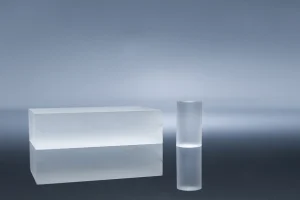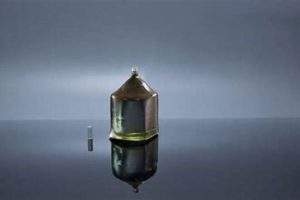Introduction to Crystals in Defense Laser Systems
In the modern era of technology, the defense industry has seen a significant transformation. Crystals like Nd:YAG, Er:YAG, and Tm:YAG have become essential components in defense laser systems. These crystals are not only vital for target acquisition but also play a crucial role in range finding and anti-missile applications. In this article, we will explore the various aspects of these crystals and their applications in defense laser systems.
The Importance of Laser Systems in Defense
In the ever-evolving landscape of defense technology, the importance of laser systems cannot be overstated. These systems, powered by specialized crystals like Nd:YAG, Er:YAG, and Tm:YAG, have become the cornerstone of modern military applications, revolutionizing the way we approach target acquisition, range finding, and anti-missile defense.
Target acquisition, a critical aspect of military operations, has been significantly enhanced with the help of Nd:YAG crystals. These neodymium-doped yttrium aluminum garnet crystals are known for their high thermal conductivity and optical quality, providing a stable and precise laser beam that can pinpoint targets with unparalleled accuracy. The integration of Nd:YAG crystals into laser-guided systems has not only increased the precision of targeting but also reduced the margin of error, allowing for more effective and efficient operations. Whether it’s guiding a missile to its intended target or assisting a sniper in aligning a perfect shot, the role of Nd:YAG crystals in target acquisition is vital.
In addition to target acquisition, laser systems have also transformed the field of range finding. Er:YAG crystals, or erbium-doped yttrium aluminum garnet crystals, are commonly used in this application. Their unique properties enable them to produce a coherent and powerful laser beam that can measure distances with extreme precision. This ability to accurately gauge distances is crucial in both offensive and defensive military operations. From determining the exact location of an enemy’s position to calculating the trajectory of an artillery shell, Er:YAG crystals have made range finding more accurate and reliable. The utilization of these crystals has led to more strategic planning and execution of missions, minimizing risks and maximizing success.
The development of Tm:YAG crystals, or thulium-doped yttrium aluminum garnet crystals, has led to breakthroughs in anti-missile technology. These crystals are used to generate high-energy laser beams capable of intercepting and neutralizing incoming missiles, providing a robust defense against potential threats. In a world where missile attacks are a constant threat, the ability to detect and destroy incoming missiles before they reach their target is paramount. Tm:YAG crystals have made this possible by enabling the creation of laser-based anti-missile systems that can track, target, and eliminate incoming threats in real time. The integration of Tm:YAG crystals into defense systems has not only strengthened the protection of critical infrastructure but also provided a new layer of security that was previously unattainable.
In conclusion, the synergy of Nd:YAG, Er:YAG, and Tm:YAG crystals in defense laser systems has marked a significant advancement in military technology. From enhancing the accuracy of target acquisition to revolutionizing range finding and fortifying anti-missile defenses, these crystals have played a pivotal role in shaping the future of defense. Their unique properties and diverse applications have contributed to the protection of nations and the advancement of technology, solidifying their position as indispensable components in the defense industry. As we continue to explore and innovate, these crystals will undoubtedly play an even more prominent role in the defense landscape, providing solutions and opportunities that will define the next generation of military excellence.
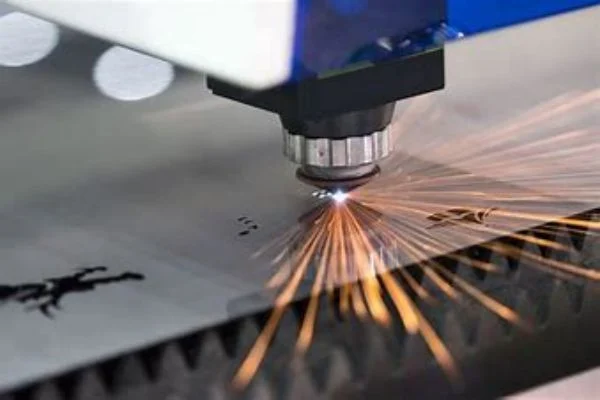
Exploring the Crystals Used in Defense Laser Systems
Nd:YAG Crystals
Nd:YAG (Neodymium-doped Yttrium Aluminum Garnet) crystals have become a fundamental component in modern laser technology, particularly in the field of defense. Known for their high thermal conductivity and optical quality, these crystals are widely used in various laser applications due to their efficiency and stability. The composition of Nd:YAG crystals, which includes neodymium ions doped into a host crystal lattice of yttrium aluminum garnet, gives them unique properties that make them suitable for high-powered laser operations.
In the defense sector, the applications of Nd:YAG crystals are vast and critical. They are used in target designation, where their ability to produce a stable and precise laser beam helps in accurately pinpointing targets. This has revolutionized the way military operations are conducted, allowing for more precise targeting and reduced collateral damage. The reliability and precision of Nd:YAG crystals also extend to guidance systems, where they play a vital role in directing missiles and other guided munitions to their intended targets. The integration of these crystals into guidance systems has increased the accuracy and effectiveness of weaponry, making them an indispensable part of modern warfare technology.
Furthermore, Nd:YAG crystals are used in other critical applications such as laser rangefinders, surveillance, and reconnaissance systems. Their ability to generate coherent and powerful laser beams has made them essential in measuring distances and gathering intelligence. In surveillance, the use of Nd:YAG crystals has enabled the development of advanced laser-based systems that can monitor and detect potential threats from great distances, providing an added layer of security.
The versatility of Nd:YAG crystals extends beyond defense applications. They are also used in medical procedures, industrial manufacturing, and scientific research. In medicine, for example, Nd:YAG lasers are used for surgeries and therapeutic treatments, while in the industrial sector, they are utilized for cutting, welding, and engraving.
In conclusion, Nd:YAG crystals have emerged as a vital element in the advancement of laser technology. Their unique composition and properties have made them a preferred choice for various applications, not only in the defense sector but also in other fields like medicine and industry. The continued exploration and innovation in the utilization of Nd:YAG crystals will undoubtedly lead to further breakthroughs and applications, solidifying their position as a key component in modern technology. Their role in enhancing the accuracy, efficiency, and reliability of defense systems underscores their significance in protecting nations and shaping the future of warfare technology.
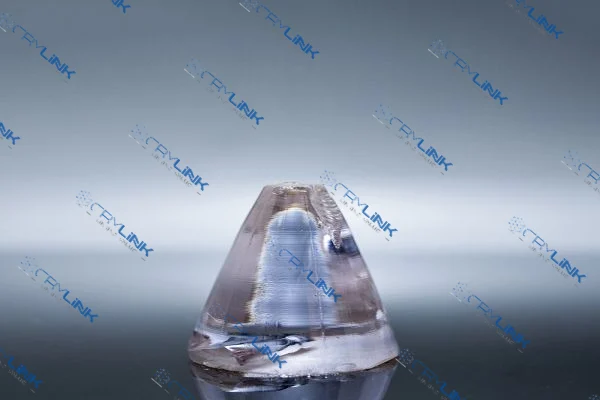
Er:YAG Crystals
Er:YAG (Erbium-doped Yttrium Aluminum Garnet) crystals have become a prominent feature in the world of laser technology, with applications that extend from medical procedures to military operations. These crystals are renowned for their ability to produce laser beams at specific wavelengths, a unique characteristic that has led to their widespread use in various fields.
The composition of Er:YAG crystals, which includes erbium ions doped into a host crystal lattice of yttrium aluminum garnet, gives them the ability to generate laser beams in the mid-infrared region of the spectrum. This specific wavelength range is highly effective for cutting and ablating biological tissues, making Er:YAG crystals ideal for medical applications such as skin resurfacing, dental procedures, and surgical interventions. Their precision and control have revolutionized medical treatments, providing minimally invasive options that reduce recovery time and enhance patient outcomes.
In the defense sector, Er:YAG crystals have found significant applications, particularly in distance measurement and reconnaissance. Their ability to produce coherent and powerful laser beams allows for precise distance measurement, a critical aspect of military operations. Whether it’s determining the exact location of an enemy position or calculating the distance to a target, Er:YAG crystals provide the accuracy needed for strategic planning and execution. This has led to more effective and efficient military missions, minimizing risks and maximizing success.

Furthermore, Er:YAG crystals are utilized in reconnaissance and surveillance systems, where their unique properties enable the development of advanced laser-based technologies that can detect and monitor potential threats. From aerial surveillance to ground-based monitoring, Er:YAG crystals have enhanced the ability of defense forces to gather intelligence and maintain situational awareness. Their versatility and efficiency have made them a preferred choice for military use, contributing to the protection of critical assets and national security.
Beyond defense and medical applications, Er:YAG crystals are also used in industrial and scientific research. In the industrial sector, they are employed in cutting, engraving, and welding processes, while in scientific research, they are used in spectroscopy and other analytical techniques.
In conclusion, Er:YAG crystals have emerged as a vital technological advancement with diverse applications. Their unique composition and ability to produce laser beams at specific wavelengths have opened doors to innovations in medicine, defense, industry, and research. The continued exploration of Er:YAG crystals will undoubtedly lead to further breakthroughs and applications, solidifying their position as a key component in modern technology. Their role in enhancing the precision, versatility, and efficiency of various systems underscores their significance in shaping the future of technology across multiple sectors.
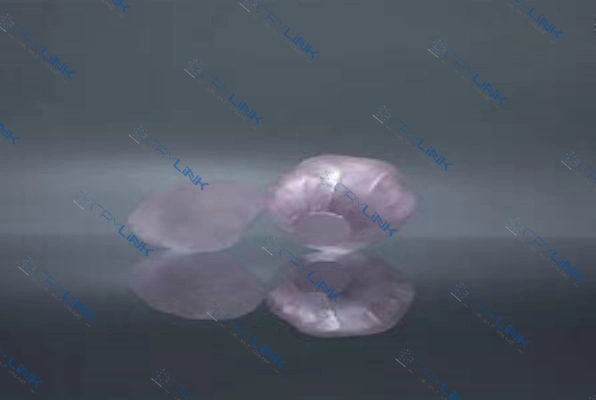
Tm:YAG Crystals
Tm:YAG (Thulium-doped Yttrium Aluminum Garnet) crystals represent a significant advancement in the field of laser technology, particularly in the realm of defense. These crystals are used to generate high-energy laser beams, a characteristic that stems from their unique composition, which includes thulium ions doped into a host crystal lattice of yttrium aluminum garnet. Their ability to operate at various temperatures and their resistance to environmental factors make them highly suitable for demanding applications, such as anti-missile systems.
In the defense sector, Tm:YAG crystals have become vital in the development of laser-based anti-missile systems. The world today faces an ever-increasing threat from missile attacks, and the ability to detect and neutralize these threats before they reach their targets is paramount. Tm:YAG crystals provide the necessary power and precision to achieve this goal. By generating high-energy laser beams, these crystals enable the creation of advanced defense systems that can track, target, and eliminate incoming missiles in real time.
The integration of Tm:YAG crystals into anti-missile systems has not only strengthened the protection of critical infrastructure but also provided a new layer of security that was previously unattainable. Their robustness and adaptability to various environmental conditions make them an ideal choice for deployment in diverse geographical locations, from arid deserts to humid coastal regions.
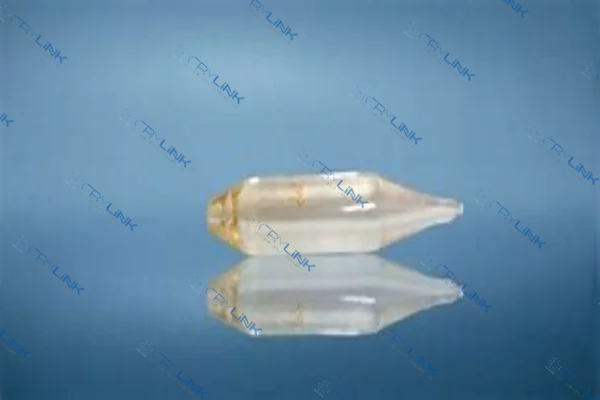
Furthermore, the applications of Tm:YAG crystals extend beyond anti-missile defense. They are also used in medical procedures, industrial manufacturing, and scientific research. In medicine, Tm:YAG lasers are employed for treatments such as kidney stone fragmentation and eye surgeries. In the industrial sector, they are utilized for cutting, welding, and engraving, while in scientific research, they are used in spectroscopy and other analytical techniques.
In conclusion, Tm:YAG crystals have emerged as a key technological innovation with a profound impact on defense and other sectors. Their unique properties and diverse applications have contributed to the enhancement of security, efficiency, and reliability across various systems. The continued exploration and innovation in the utilization of Tm:YAG crystals will undoubtedly lead to further breakthroughs and solidify their position as an indispensable component in modern technology. Their role in fortifying anti-missile defenses and protecting critical infrastructure underscores their significance in shaping the future of defense technology and national security.

Conclusion
The integration of crystals like Nd:YAG, Er:YAG, and Tm:YAG in defense laser systems has marked a significant advancement in military technology. Their unique properties and diverse applications have not only enhanced the efficiency of target acquisition, range finding, and anti-missile systems but also contributed to the protection of critical infrastructure. As we continue to explore and innovate, these crystals will undoubtedly play an even more prominent role in shaping the future of defense technology.
FAQs
- What are Nd:YAG crystals, and how are they used in defense?
- Nd:YAG crystals are used in target acquisition and guidance systems due to their high thermal conductivity and optical quality.
- How do Er:YAG crystals contribute to range finding?
- Er:YAG crystals produce laser beams at specific wavelengths, making them ideal for precise distance measurement in range finding.
- What makes Tm:YAG crystals suitable for anti-missile applications?
- Tm:YAG crystals can generate high-energy laser beams and operate at various temperatures, making them effective in anti-missile systems.
- Why are these crystals essential for protecting critical infrastructure?
- These crystals enhance the accuracy, efficiency, and reliability of defense laser systems, contributing to the protection of vital assets and infrastructure.
- Can these crystals be used in other industries besides defense?
- Yes, these crystals have applications in medical, industrial, and scientific fields due to their unique properties and versatility.


